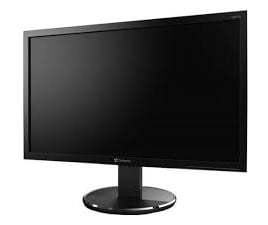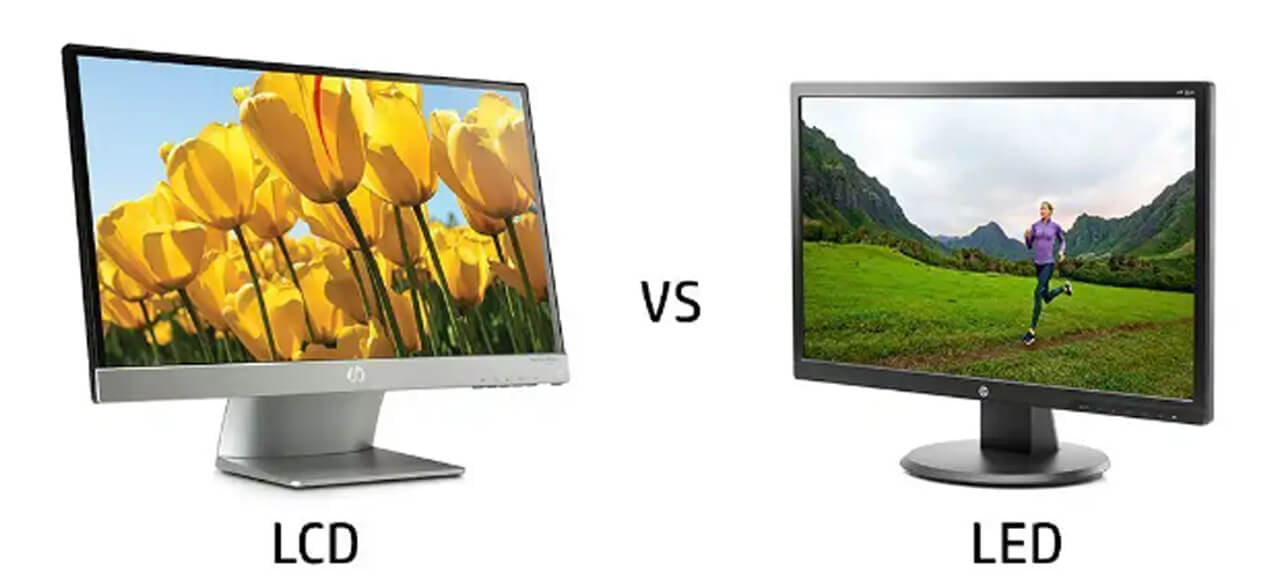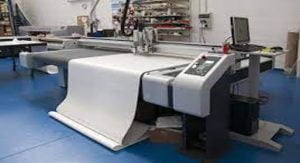There are two main categories of monitors that you can choose from when looking to buy one for your computer. LED vs LCD is our concerning topics today.
If you don’t have sufficient knowledge about LCD and LED monitors, it will be difficult for you to choose which one to purchase.
There are many variants available for both types of monitors, and each has a fair share of advantages and disadvantages.
To help you choose the right monitor for you, we’ll cover all the different features of LCD and LED monitors in this article.
For comparing purpose of LED vs LCD I will discuss about LCS monitors first then go to LED monitors.
LCD Monitor & How it Works?
Thousands of light-displaying pixels make up an LCD monitor.

Liquid crystal display, or LCD, refers to the different layers that make up each pixel and enable the monitor to function.
- A sheet of the polarizing film makes use of the light waves coming from behind in the first layer. It only allows the horizontal light waves to pass through, blocking the vertical ones.
- There are more than three layers in the second layer. You’ll discover protective glass with liquid crystal on the inside in two of them. They are held in place by crystals, which also guard against injury.
- A polarization sheet makes up the third layer, which also blocks horizontal light.
- The fourth layer, which is responsible for color variations, is the last one. Each pixel contains three light filters that produce blue, green, and red hues.
Let’s now examine how LCD monitors operate. Liquid crystals may spin and twist up to 90 degrees when there is no electricity present.
This allows light to pass through the crystals more easily.
The light will travel through the second filter and either the green, red, or blue light filter throughout this procedure.
Liquid crystals may dim a pixel when there is electricity present because they obscure the light from behind.
There are individual pixels of different colors on the LCD.
Advantages and disadvantages of LCD monitors
The benefits and drawbacks of LCD monitors are listed below for your consideration. Let’s see the advantages and disadvantages of LCD monitors.
Advantages of LCD monitors
- An LCD monitor has a life expectancy of around 30,000 hours. This indicates that using it for 10 hours each day may last for 8 years.
- Because LCD monitors don’t suffer from burn-in, they are ideal for gamers. The “burn-in” problem occurs when an image remains on the screen after being shown for an excessive amount of time.
- Some models have HDR components to improve the visual effect.
- In contrast to the newest monitors, LCD monitors are inexpensively priced.
Disadvantages of LCD monitors
- LCD monitors may weigh more and be bulkier.
- LCD monitors tend to become hot and use more electricity.
- The majority of monitors lack 4K support.
- It could include mercury, which causes contamination, particularly after a while of use.
- Because of the lesser contrasts, it could provide less clarity.
Different types of LCD monitors
Three main types of LCS monitors is given bellow according to popularity.
1. TN Panels
One of the earliest LCD monitors used a TN panel. Some of the quickest gaming monitors feature Twisted Nematic because of its faster reaction time.
Additionally, it enables a very quick refresh rate of 240 Hz.
Motion blur will be lessened and the smoothness of visual transitions will be enhanced with this refresh rate.
2. VA panel
The vertical alignment panel, often known as a VA panel, first appeared in the 1990s. Liquid crystals are used in the vertically oriented VA panel.
It is capable of producing vivid colors and deep blacks. The VA panel’s ability to provide improved contrast is among its strongest features.
Its refresh rate is lower than the TN panel, however. Another drawback is that it may be more expensive and is not a widely used LCD panel technology.
3. IPS panel
In-plane switching, or IPS panels, is the greatest LCD panel technology. It can accommodate higher refresh rates and broad viewing angles.
The IPS panel has a refresh rate of 144 Hz, which is still faster than TN panels but slower than LCDs. Additionally, the IPS panel offers superb color reproduction.
Decide on an LCD monitor with an IPS panel if you want to use one if you decide to use an LCD monitor.
Now, let’s go to the LED monitors.
You may also like 9 best types of monitors and 3 main categories of monitors.
LED monitors & the function of LED monitors
The operation of LCD and LED monitors is the same. But light-emitting diodes, or LEDs, also have LED backlighting.

There will be vivid colors and a crisp contrast with LED backlighting. LED monitors also guarantee optimal energy efficiency and are small in size.
Since LED backlighting has a greater refresh rate, reaction times are quick.
Many different kinds of LED backlighting, including array-lit and edge-lit, support the creation of the ideal picture.
Edge-lit monitors surround the edges, while array-lit monitors are behind the screen. Even one with local dimming capability for deeper blacks is available.
Advantages and Disadvantages of LED Monitor
The benefits and drawbacks of LED monitors are listed below for your consideration. Let’s see the advantages and disadvantages of LED monitors.
Advantages of LED monitors
- Given that LED monitors have a 50,000-hour lifetime and are used for 8 to 10 hours a day, they can last for about 15 years.
- It offers a crisper picture with increased contrast and richer color quality.
- It offers power-saving performance that is energy-efficient.
- It looks stylish and saves room because of the thin design.
- Because it supports 4K resolution, it can run the most recent movies, videos, and top-tier games.
- Since it contains no mercury, there won’t be any pollution problems.
- The fast reaction speeds offered by LCD monitors make them perfect for gaming.
Disadvantages of LED monitors
- Screen burn or image retention are major concerns.
- Pricier and have a higher starting price point.
Different types of LED monitors
Five main types of LED monitors is given bellow for your concern.
1. Edge-Lit LED
One of the finest features of Edge-Lit LED is the sleek shape that it has. Fewer LEDs are used, which helps keep the price of the new screen cheaper.
When facing the screen, an edge-lit LED monitor features a ring of LEDs surrounding the image.
This ensures that the screen will be consistent, which contributes to the creation of the picture. It does, however, have a drawback.
The brightest parts are located at the margins, and the contrast is dark.
Low black levels and a lack of color homogeneity may result from this. Some regions may seem darker than others as a result.
2. Full-Array LED
The LCD is surrounded by a grid of LED lights in the Full-Array LED display. As the LEDs flash outward, they may provide a consistent and brilliant image.
Efficiency advantages are seen even in full-array LED panels. This sort of monitor may provide local dimming, which is a benefit.
It makes it easier for the group of LEDs to turn on and off as needed. This contributes to control and the best brightness level.
3. RGB LED
LEDs don’t create pure white light, but RGB LEDs do. It is closer to yellow, however. A color change in the picture might result from a difference.
As a result, some producers have created white LEDs that include clusters of RGB (red, green, and blue) LEDs.
Combining RGB LED colors makes it easier to produce pure white, which makes it possible to see genuine, distinct colors.
RGB LED produces vibrant colors via sophisticated programming and circuits. The price of the RGB LED screen may rise as a result.
4. OLED
OLED is a more sophisticated kind of LED illumination. To increase the dark levels, organic light-emitting diodes may independently dim or shine.

Enhancing the contrast ratio and ensuring that the colors are crisp also assist. OLED TVs and monitors also have outstanding viewing angles and color reproduction.
This kind of monitor uses high dynamic range programming to enhance color accuracy.
Because of its superior color depth, it is ideal for smartphone screens. It costs a lot of money and uses a lot of electricity.
5. QLED
Quantum Dot LED, or QLED, enhances color fidelity over a standard LED monitor by 90%.
High degrees of color depth and brightness will be present with it. Quantum dots are semiconductor nanocrystals that emit light at different wavelengths.
For a comprehensive image, it converts the blue LED light into red and green hues.
There are billions of nanocrystals in a single quantum dot monitor, providing exceptional color depth and dark range.
LED vs LCD comparison between LCD and LED monitors
Here is an extensive comparison of LCD and LED monitors based on several factors. Let’s see some factor of LED vs LCD.
Which is better for gaming, LED vs LCD?
You need a monitor with a fast refresh rate and a quick reaction time for gaming.
Response time is the amount of time it takes for pixels on a monitor to change while switching between images.
To prevent latency problems, a high refresh rate is required.
In addition to having greater image and video quality and clarity than LCD monitors, LED monitors perform better across the board.
Which has a superior visual quality, LED vs LCD?
The visual quality is the main difference between LED and LCD monitors. Compared to LCD monitors, LED monitors offer far greater image quality.
Only when you watch or play premium films or games will you be able to comprehend it.
LED monitors outperform LCD monitors in terms of visual quality, from a sharper, clearer image to quicker rendering and a higher refresh rate.
Which uses less energy: LED vs LCD?
Compared to LCD monitors, LED monitors are more energy-efficient. The power consumption of light-emitting diodes is lower.
An LED monitor of 32 inches will use 10 watts less electricity than an LCD monitor of the same size, according to a comparison of energy use.
The difference in power usage increases with size.
Is lifespan greater for LCD or LED?
The lifetime of an LCD monitor is around 30,000 hours, compared to the 50,000 hours of an LED monitor.
LED monitors naturally have a longer lifespan, which is accounted for in their price.
Furthermore, compared to LCD monitors of the same size, LED monitors are smaller and lighter.
Which monitor is preferable, LED vs LCD?
LED monitors are superior to LCD monitors except for burn-in problems and price.
An LED monitor ought to be your top choice if money is not a concern for you.
There is no better option than an LED monitor if you’re looking to get a monitor for gaming and video streaming.
However, if you have to purchase a monitor for regular work and your budget is limited, an LCD monitor will perform just fine.
Final thoughts
However, I think you are now clear about LED vs LCD and which is best for you. Now you can choose your own according to your needs.
You can share your valuable thoughts and opinion also in the comment section bellow.
Let’s share what you are thinking about LED vs LCD.
Recommended articles:
9 best types of monitors and 3 main categories of monitors
Types of Cameras | 12 best types of cameras for photography
6 main types of touch screens | touch screen technology
Best 3 types of projectors, use, advantages and disadvantages in details
Best 7 Types of Scanners with details
3 best smartphones you should see compared
Best 9 types of printer | Which is best for you?




